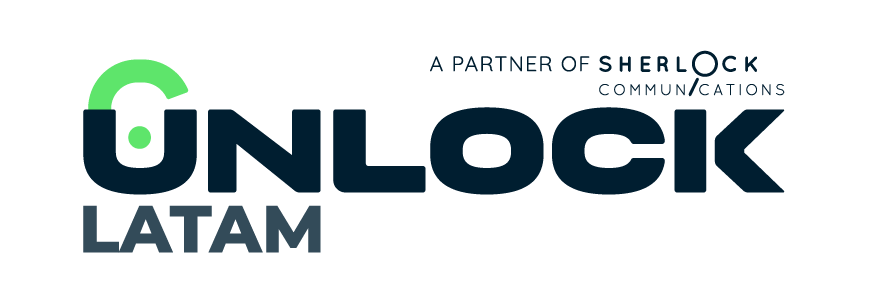What is B2B lead generation and why is it increasingly important
Implementing the best marketing and sales strategies is non-negotiable if you want to stand out among your competitors. These days, the market demands more and better skills to have a slice of the pie and we must make the greatest effort to optimize lead generation
in B2B (business-to-business) environments to take sales to another level.
Anyone who has immersed themselves in finding the right B2B sales leads knows it’s an uphill road. B2B lead generation strategies are challenging and require a lot of patience and perseverance, but, well planned, they are the key to predictable revenue.
It is about planning and structuring the process, preventing and acting on the different moments of the sales cycle. We can optimize the use of resources and improve conversion rates if we rely on this way of approaching the business.
What is B2B lead generation
B2B lead generation is a method B2B marketers and sellers use to drive prospective customers to its organization organically. This consists of various inbound marketing tactics that build visibility, awareness, and interest from prospects within a specific target audience.
In the B2B lead generation process, the business development representatives (BDR) and the sales development representatives (SDR) identify and attract prospects (who are companies or organizations rather than individual consumers) into the sales funnel.
B2B sales leads aren’t necessarily harder to find than B2C leads, but they can be much harder to qualify and convert. While B2C leads will always be individual people, B2B leads can be somewhat of a mystery.
Lead generation involves collecting a potential customer’s information and using that information to target them with customized sales pitches or ad campaigns. It is an essential activity for B2B marketing and sales teams. This process serves as the vital link that aligns marketing and sales teams, providing representatives with a proven framework to follow.
More leads, more prospects, more revenue
It’s simple: more leads = more sales. To drive growth, you need more leads. But B2B lead generation is far from a leisurely walk in the park. You will have to navigate ups and downs, designing a consistent cadence (link a nota de cadence cuando esté publicada) that allows you to impact at different moments in the sales cycle.
Moving forward with a structured plan is key in B2b lead generation. Creating leads requires a series of carefully orchestrated steps that salespeople and marketing teams take to transform potential customers into paying customers.
How is B2B lead generation carried out?
B2B lead generation is carried out through a variety of sales and marketing activities.
In sales, B2B lead generation is done through a process called B2B outbound. This process includes cold calling, Outbound Email, Social Selling, Sales Cadences, etc.
For marketers, the process of B2B lead generation is also known as demand generation. How to generate leads and demand? There are several tactics that marketers can leverage: growth hacking, content marketing, Account-based marketing (ABM), etc.
The goals of these activities will vary depending on where the lead is in the B2B marketing funnel. It could be to attract new leads to the business or to steer existing leads towards making a purchasing decision.
Why is B2B lead generation important?
Without lead generation, there are no leads to flow through the sales pipeline, no conversions, no customers, and no more business. In addition to operating as the beating heart of a company, B2B lead gen also provides key information to marketing reps, sales reps, and sales development reps (SDRs).
Focusing on a solid lead generation strategy can help your business:
- Identify ideal customers.
- Provide guidance on content creation.
- Build brand awareness and visibility.
- Cultivate solid marketing practices and strategy.
- Discover a broader addressable market.
- Provide accurate, up-to-date contact info for leads.
- Increase conversion rates.
- Optimize your sales cadence.
- Improve sales pipeline flow.
- Generate higher revenues.
B2B lead generation tools and strategies
Here are some common B2B lead generation strategies:
- Quality content: creating and sharing relevant and useful content is essential. This can include blogs, white papers, case studies, webinars, and other resources that demonstrate your expertise and add value to your target audience.
- Website optimization: make sure your website is optimized for lead generation. Offer clear contact forms, compelling calls to action (CTAs), and targeted landing pages to capture potential customers’ contact information.
- Content Marketing: use content marketing strategies to reach your target audience. This involves distributing your content through channels such as social media, newsletters, online ads, and blog posts relevant to your industry.
- Email marketing: email marketing continues to be a powerful tool in B2B lead generation. Send personalized and relevant emails to your contact list, offering valuable content and calls to action that drive engagement.
- Networking and Events: Participating in conferences, trade shows, and industry events is a great way to network. These events provide opportunities to meet potential clients face to face and build relationships.
It is essential to have an integrated strategy that combines various lead generation tactics to get the best results in the B2B environment. Consistency, tracking, and measuring results are key to continually adjusting and improving your lead generation strategy.
Mastering Outbound Sales: Strategies for Predictable Revenue Growth
Mastering Outbound Sales: Strategies for Predictable Revenue Growth Nobody said it better than Aaron Ross, author of Predictable Revenue: “You want growth that doesn’t require guessing, hope, and frantic last-minute...
The Role of Sales Development Representatives (SDRs) in Predictable Revenue
The Role of Sales Development Representatives (SDRs) in Predictable Revenue Sales Development Representatives (SDRs) play a crucial role in the implementation of the "Predictable Revenue" framework, initially conceptualized by Aaron...
B2B prospecting: finding high-quality leads
B2B prospecting: finding high-quality leads Although there are very common concepts among those of us who work in different areas of marketing, more than once we take for granted that...



